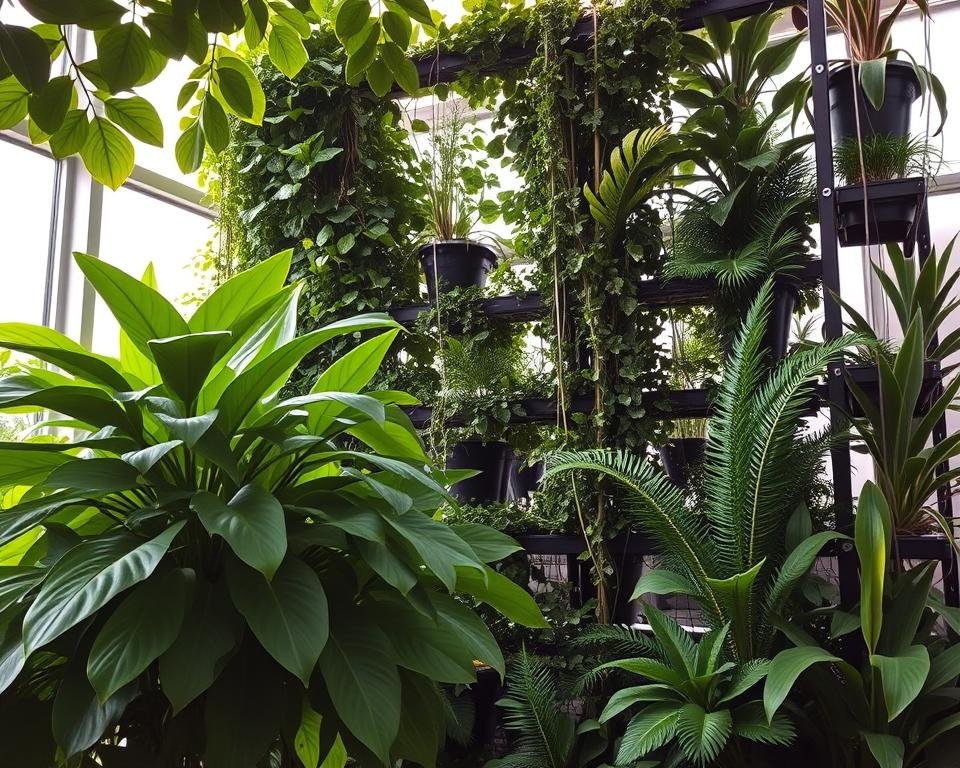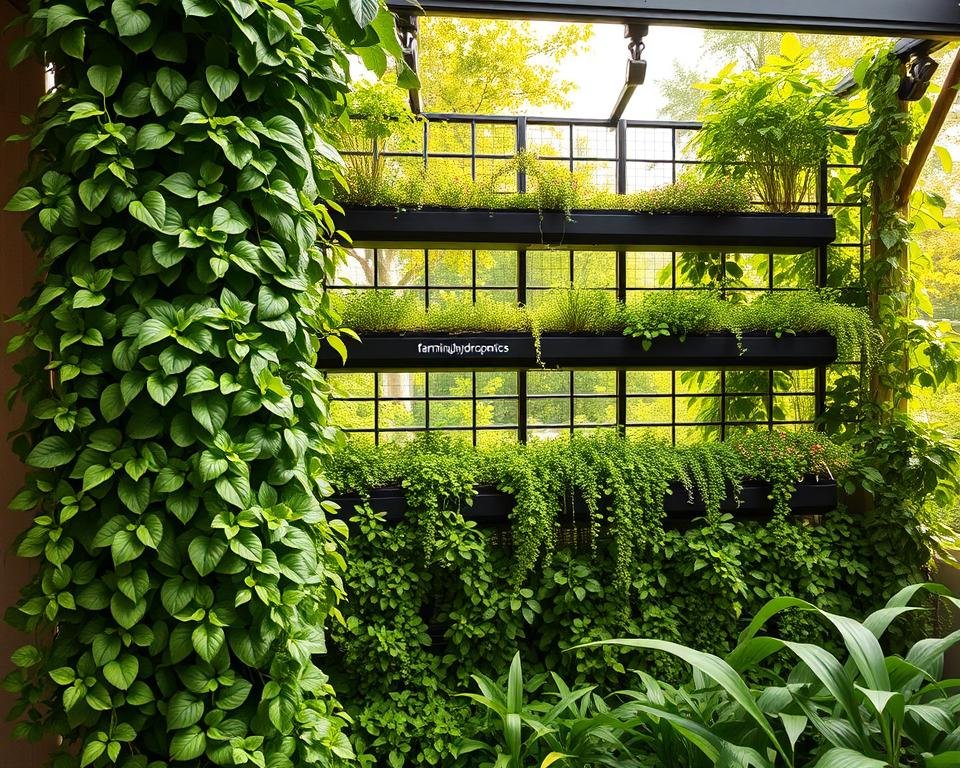Soundproofing Solutions: Vertical Gardens for Quiet Homes
The constant buzz of urban life—traffic, neighbors, and sirens—can overwhelm even the coziest apartment. With soundproofing solutions that use vertical gardens, you can transform that noise problem into a calming, green advantage.
Living walls go far beyond traditional insulation: they absorb sound, filter air, and add stunning natural beauty to your décor. Leveraging plant leaves, stems, and soil as organic sound‑dampening layers, these soundproofing solutions create a tranquil sanctuary that shields you from the city’s clamor.
Whether you reside in a bustling downtown loft or a noisy suburban townhouse, integrating vertical gardens as soundproofing solutions offers a sustainable, visually appealing way to reclaim acoustic comfort and elevate your living environment.
Key Takeaways
- Vertical gardens effectively reduce urban noise pollution
- Plants act as natural sound barriers and absorbers
- These green solutions improve air quality and aesthetics
- Versatile for various living spaces and environments
- Combines acoustic performance with ecological benefits
Understanding Vertical Gardens as Sound Barriers
Turning your home improvement into a way to reduce noise is smart. Vertical gardens can act as sound barriers. They use plants to absorb sound, making outdoor areas quieter.
How Plants Absorb and Deflect Sound Waves
Plants and sound waves have an interesting relationship. Big plants with wide leaves are great at soaking up sound. When sound hits these leaves, it scatters and gets absorbed, lowering noise levels.
- Broad leaves interrupt sound wave transmission
- Dense foliage creates natural sound barriers
- Plants add mass to reduce noise penetration
The Science Behind Plant-Based Acoustic Insulation
Plants act as dynamic sound absorption systems. Their structure helps them catch and spread out sound energy better than solid barriers. The uneven surfaces of leaves and branches break up sound waves, stopping them from passing through.
| Plant Type | Noise Reduction Potential | Recommended Placement |
|---|---|---|
| Evergreen Shrubs | 5-10 dB reduction | Perimeter boundaries |
| Dense Hedges | 3-7 dB reduction | Near noise sources |
| Tall Grasses | 2-5 dB reduction | Supplementary barriers |
Impact of Foliage Density on Noise Reduction
The better your vertical garden works as a sound barrier, the denser it is. Thicker, layered plants block more noise. Mixing different plant heights and layers makes your outdoor space quieter.
Best Plants for Acoustic Insulation

Starting a quiet home begins with picking the right plants for sound absorption. Not all plants are good at blocking noise. Choose dense plants to cut down on outside sounds.
Evergreen plants are great for sound insulation. They have thick leaves and grow close together, making them sound barriers.
- Bamboo: Rapid growth and dense stem structure
- Leyland Cypress: Fast-growing noise barrier reaching 70 feet
- Holly: Thick foliage up to 25 feet tall
- Western Red Cedar: Quick growth to 40 feet
The sound barrier of your vertical garden depends on the plants you choose and where you put them. Densely planted trees spanning at least 40 feet can create an effective sound barrier. A mix of broadleaf and evergreen conifers can lower noise by 10 decibels.
| Plant Species | Mature Height | Noise Reduction Potential |
|---|---|---|
| Leyland Cypress | 70 feet | High |
| Southern Magnolia | 80 feet | Very High |
| Virginia Juniper | 40 feet | Moderate |
Creating a plant-based sound barrier takes time. These plants need to grow and mature before they can block sound well.
Soundproofing Solutions: Installation and Design Strategies
To make a peaceful workspace, you need to plan well and use smart noise barrier techniques. Your vertical garden can be a great way to block out noise and change your space.

- Check if the structure can hold the garden before you start
- Look at how sound moves in your room
- Choose modular vertical garden systems for easy setup
Modular System Setup Guidelines
Modular vertical garden systems make setting up noise reduction easier. They are flexible and don’t hurt the structure much. This makes them perfect for homes and offices.
Strategic Placement for Maximum Effect
It’s key to find where sound travels most. Put your noise barrier near loud spots for the best results.
Maintenance Requirements and Care Tips
Keeping your vertical garden in good shape is important. Regularly care for your plants, manage moisture, and check the structure. This way, your space will stay beautiful and quiet.
Creating Optimal Sound Environments in Different Spaces
To make your home a peaceful place, you need to soundproof it well. The World Health Organization says living spaces should be quieter than 35 decibels. Your vertical garden can help achieve this quiet in every room.
Creating a soundproof home means knowing how sound moves around. Vertical gardens are great for living areas and open spaces. They soak up sound and act as natural barriers. By placing plants with thick leaves, you can cut down on background noise and make your space calmer.
Bedrooms and home offices need extra care in making a peaceful space. Putting vertical gardens near windows and walls can block out outside noise. The thick plants work like acoustic panels but also make the air cleaner and look better.
For better soundproofing, try using mass-loaded vinyl with your vertical garden. Even tiny gaps can let a lot of sound through – up to 50%. By mixing vertical gardens with sound-blocking materials, you’ll make a quiet place that helps you relax and feel good.







